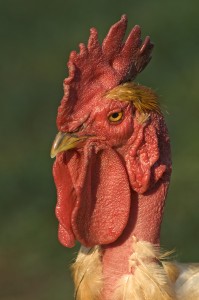Darren Naish at Tetrapod Zoology gives an overview of the cattle of Asia, with pictures. A couple of take home messages, for me. One is that the domestication of various bovids is pretty complex, with hybrids, feral forms, wild relatives and all combinations thereof in existence. The other is this conversation-stopping tidbit: “domestic cattle don’t need to shiver or employ other thermoregulatory tricks even in temperatures approaching -20° C”. Why not? Go read Darren’s post, and then reconsider the “fleshy dewlaps, tall dorsal ridges and other structures” that are typical of tropical types.
Nibbles: French fries, Maple syrup, Cooking heirlooms, Salmon, Ancient booze, Rice domestication
- India finally arrives, gets french fries.
- Sophisticated urbanites tap maples.
- Raise a rare heirloom breed. Then cook it.
- “Some might be hoping he will predict a return to the glory days of the “truly unique” strain of Petitcodiac salmon, which now likely exists only in a gene bank at the Mactaquac Fish Hatchery at this point.”
- Boffins identify world’s first cocktail.
- How people turned from nut collectors into rice farmers in China.
- Hungarians sacrificed dogs.
Rainbow breeds
All of these variants in color should be noted and celebrated, but should also be guarded by the breeders to be certain that all of them can be available to future breeders. Past breeders bequeathed this wealth of variation and adaptation to the present generation – and it is important that each generation guard the resource and present it to the next generation as a useful and viable genetic resource.
A neck bred for biting
Quick, what do you think of when I say “Transylvania”? Right. And where do vampires generally bite? Right again: on the neck. So, what are we to make of a breed of chicken called the Transylvanian Naked Neck? That is was bred to be bitten?

As for the original discussion, it ended with reference to a paper Prospects for conserving traditional poultry breeds of the Carpathian Basin in which the Transylvanian Naked Neck is just one of the breeds considered. There’s a bunch of stuff in there about why the breeds are valuable and how they’re being conserved, and lots of pictures. But not an answer to the fundamental question: What (if any) evolutionary value does a naked neck give its holder? Probably none. And if they suffer more in cold weather it could even be harmful, but at least some people, and not just photophobic immortals, find them attractive. Which is a good enough reason to conserve them. Luigi reckons they probably taste good too.
Photo by Flint-Hill, used with permission.
Fibre scans online
The International Year of Natural Fibres has a great website, and the latest thing on it is a selection of beautiful micrographs of different kinds of fibres, from abaca to yak.